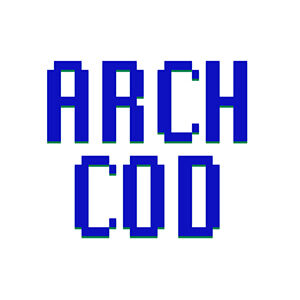Bauhaus Beyond Buildings: The Architectural Movement’s Impact on Modern Art and Design
Calling all architects, landscape architects and interior designers: Architizer’s A+Awards allows firms of all sizes to showcase their practice and vie for the title of “World’s Best Architecture Firm.” Start an A+Firm Award Application today.
The word “interdisciplinarity” has gained immense traction in the contemporary world, especially in the field of arts and humanities, where these disciplines continuously intertwine. A recent article in QS Insights Magazine revealed that even though interdisciplinary collaboration is indispensable and common in modern university research, only now are postgraduate and undergraduate degrees becoming established and advocating for a more inclusive education.
In the case of architecture, the discipline has always been covertly — or rather quietly — interdisciplinary, with architects studying art, physics, philosophy, craft, sociology etc. along with design, theory and construction. Although today this is well recognized, so far there has only been one school, founded more than a century ago, that acknowledged the value of interdisciplinarity so strongly and advocated for an innovative way of thinking in the field of architecture and design. This article investigates the particular school’s educational model, focusing on everything apart from architecture, in an attempt to view the specific discipline through the lens of its immediate (and maybe not so immediate) influences.
The famous Bauhaus school was founded in 1919 and remained operational until 1933. Even though it functioned for merely fourteen years, the school introduced a new approach to design that has steered the direction of art, design and architecture throughout the 20th and 21st centuries. Its core philosophy was to integrate art, craft and technology to produce works that were based on functionality and simplicity, promoting a holistic approach to creative education, while contrasting the era’s flamboyant and highly decorative movements.
Walter Gropius, the school’s founder, dreamed of a union between art and design and developed a craft-based curriculum that combined architecture, sculpture and painting along with craft-based workshops into a single creative expression.
Visual Arts in the Bauhaus
Upon entering the school, students were immediately exposed to color theory, material studies and formal relationships, taught by visual artists like Paul Klee, Vasily Kandinsky and Josef Albers. Translucent geometric shapes and a never-ending dance between the abstract and the figurative, characterized the paintings produced by the Bauhaus school. Instead of representing the real, the work reveled esoteric symbolisms and complex narratives that captured the imagination.
The Bauhaus’ Cabinet-Making Workshop
After completing the preliminary curriculum, students entered specialized workshops, where practical arts (architecture, interior design, textiles) were suddenly combined with the pure and rather idealistic nature of the fine arts (painting and sculpture). The cabinet making workshop, run by Marcel Breuer, practically reconceived the essence of furniture, challenging the form of the chair, for instance, and reducing it to its most basic existence.
The Bauhaus’ Textile Workshop

Art is a word, Anni Albers (1899–1994), Design for Wall Hanging, 1925, marked as public domain, more details on Wikimedia Commons
The textiles workshop delved into the study and experimentation of unorthodox materials. Especially, under the guidance of Gunta Stölzl, students were encouraged to weave using cellophane, fiberglass and metal, eventually producing works that had tremendous commercial success and even contributed to the school’s funds.
The Bauhaus’ Metalworking Workshop
Metalworking produced perhaps the most famous design work, after architecture. Through the employment of sculptural principles and a philosophy of mass production, students developed prototypes for lighting fixtures and tableware, becoming the first pioneers of industrial design. The objects focused on functionality and ease of use, without however sacrificing the slim and pure design aesthetics promoted by the school.
The Bauhaus’ Typography Workshop
The typography workshop slowly gained popularity, especially under figures such as the graphic designer Herbert Bayer. Typography was gradually conceived as both the means of communication and artistic expression. In fact, the promotional material featuring the famous sans serif typefaces and photography, shaped the commercial identity of the school.
Functional Design and Mass Production
The Bauhaus movement emerged during a time when the world envisioned a utopian future, focusing on functional design and leveraging mass production to realize that dream. While architecture was arguably the discipline most closely associated with the movement — largely due to the significant influence of its products — the movement’s success is fundamentally tied to the interdisciplinary nature of the school’s curriculum. Without this integration of diverse fields, the Bauhaus architectural principles would not have achieved such a revolutionary impact.
One last question remains: if we were to establish a new school of architecture and design now, a century later, what type of interdisciplinary curriculum would scholars and practitioners suggest? What does the current world lack and what type of synergy between architecture, art and design is required to once again “shake” the field for the next 100 years?
Calling all architects, landscape architects and interior designers: Architizer’s A+Awards allows firms of all sizes to showcase their practice and vie for the title of “World’s Best Architecture Firm.” Start an A+Firm Award Application today.
Featured Image: Paul Klee creator QS:P170,Q44007, Paul Klee Laternenfest Bauhaus 1922, marked as public domain, more details on Wikimedia Commons



